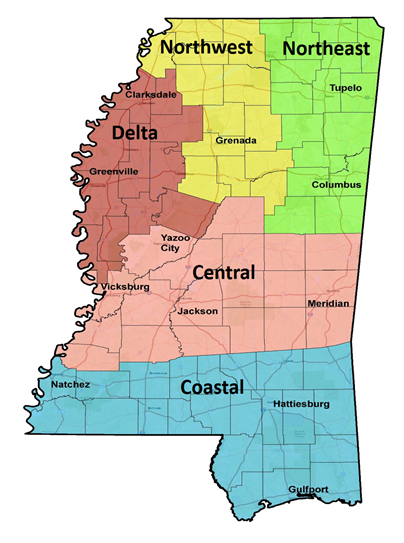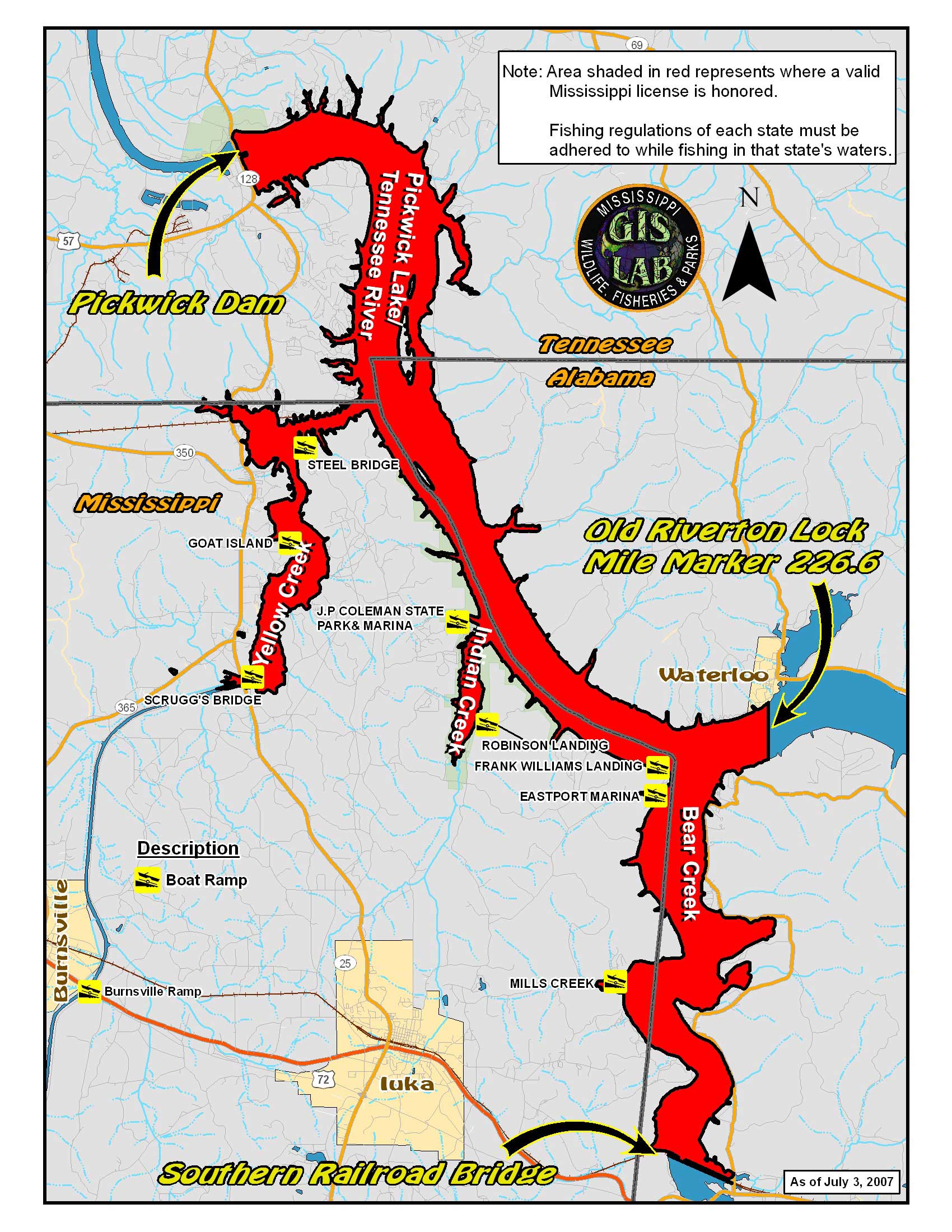Northeast Mississippi has some of the most diverse angling opportunities in North America. From cool, clear smallmouth streams to shallow, stumpy lakes filled with largemouth bass and crappie, Northeast Mississippi has something for every type of angler. MDWFP operates 4 State Fishing Lakes and 5 State Park Lakes, ranging in size from 15 to 565 acres, which are intensively managed for quality bass, bream, crappie, and catfish fishing. Pickwick Lake, a 47,000-acre impoundment of the Tennessee River flows through parts of Alabama, Mississippi, and Tennessee. The Mississippi portion is characterized by tall rock bluffs, waterfalls, and long gravel bars. Pickwick is known as the "Smallmouth Bass Capital of the World". In addition to the great smallmouth fishing, the largemouth bass population has boomed in recent years with the spread of aquatic vegetation. Pickwick also features some of the best crappie, striped bass, sauger, and catfish fishing in the country.
The most prominent fisheries resource in Northeast Mississippi is the Tennessee-Tombigbee (Tenn-Tom) Waterway. The Tenn-Tom begins just south of Pickwick Lake and flows south through an artificial canal into Bay Springs Lake. Bay Springs Lake is one of the best spotted bass fisheries in the country. The largemouth bass, crappie, and white bass fishing are excellent as well. Below Bay Springs Dam begins a series of 5 short pools known as the Canal Section of the Tenn-Tom. Below the Canal Section are Aberdeen, Columbus, and Aliceville Lakes. These three lakes support phenomenal crappie and catfish fisheries, and also provide opportunities to catch largemouth, spotted, and white bass.
For those who prefer smaller or more peaceful surroundings, Northeast Mississippi offers a number of ponds, Forest Service lakes, community lakes, and streams. The Tombigbee River, and its tributaries such as the Buttahatchie River and Luxapalila Creek, provide anglers the opportunity to catch white bass, catfish, spotted bass, and even walleye. Another unique opportunity is at Tishomingo State Park, which offers a float trip on Bear Creek, where catches of smallmouth bass are not uncommon. No matter what you like to fish for, or what type of water you prefer, Northeast Mississippi has a place for you.
Contact Information
Dustin Rodgers
Fisheries Biologist / Project Manager
(662) 840-5176
dustin.rodgers@wfp.ms.gov
Travis Ausec
Fisheries Biologist
(662) 840-5176
travis.ausec@wfp.ms.gov


